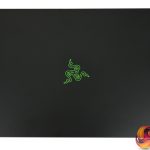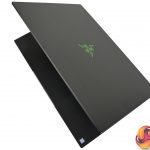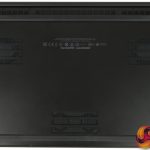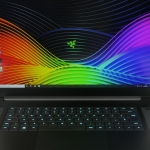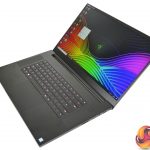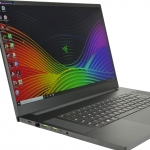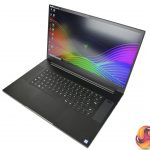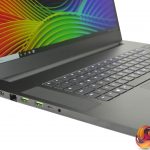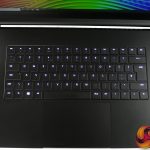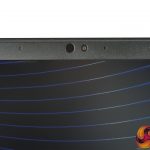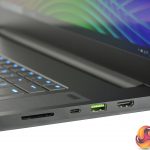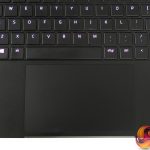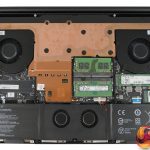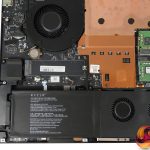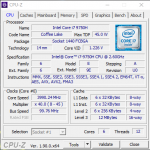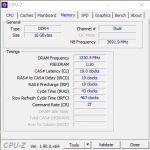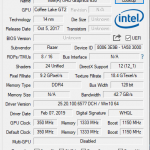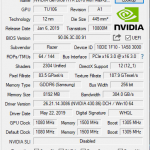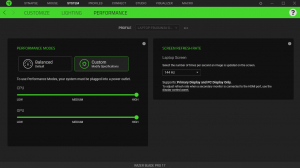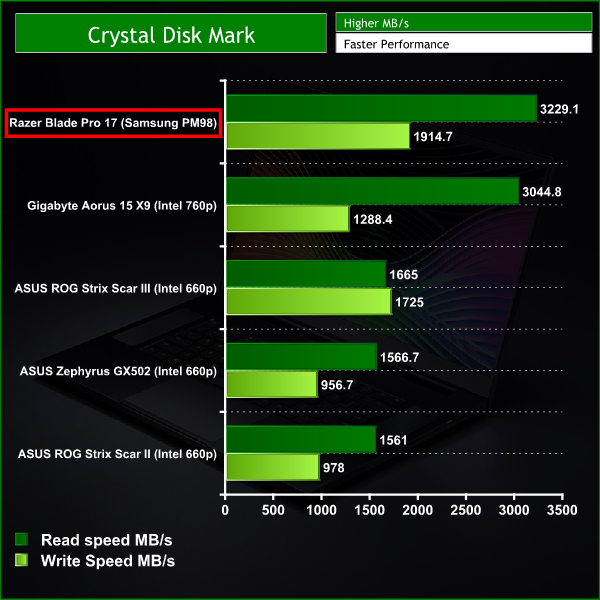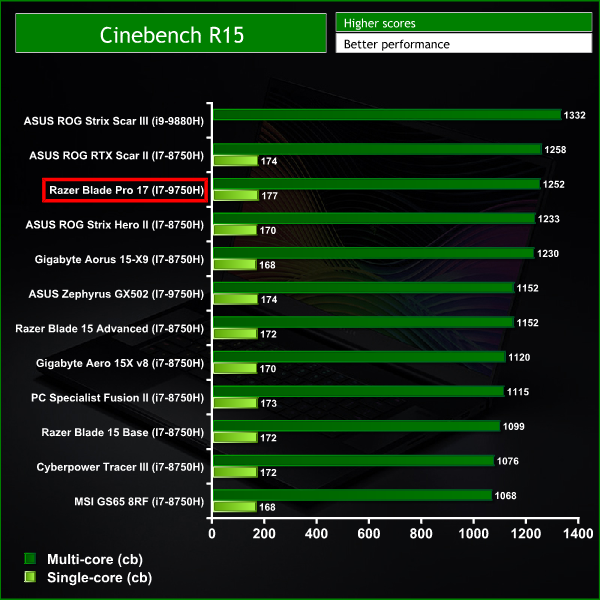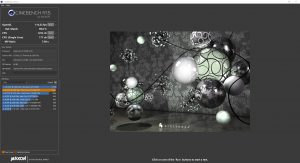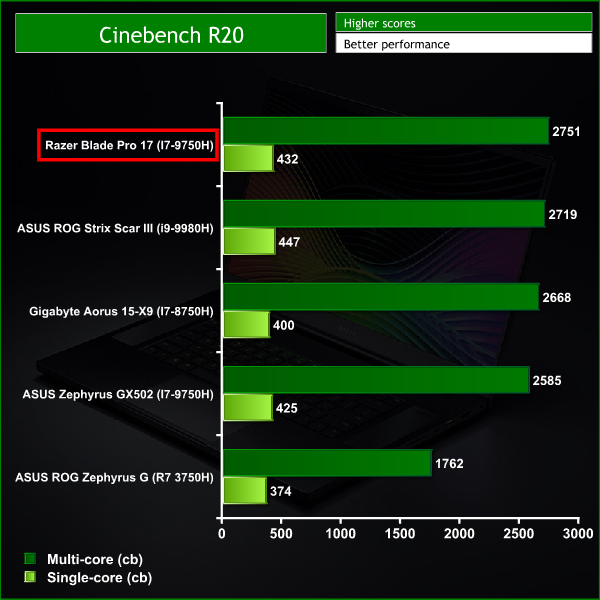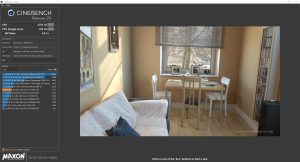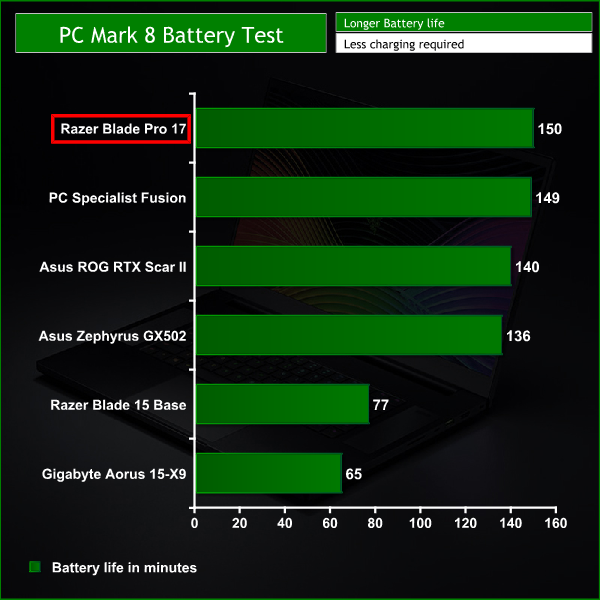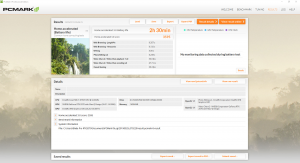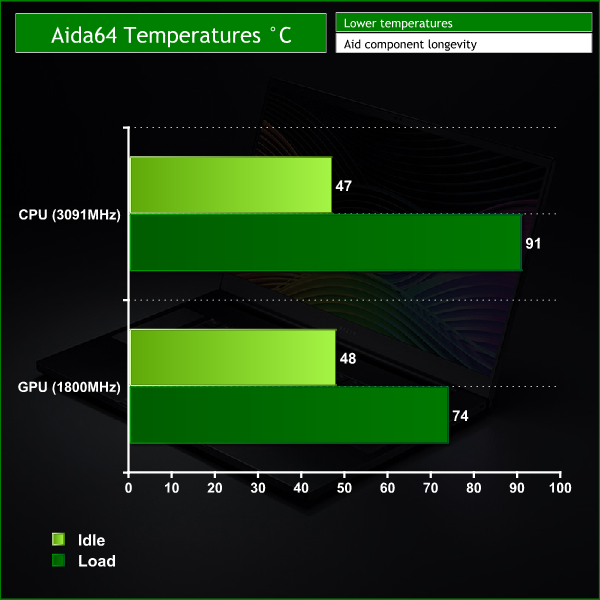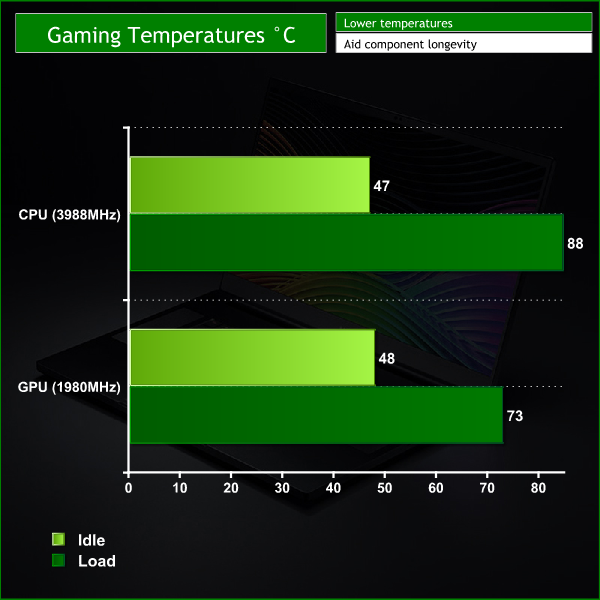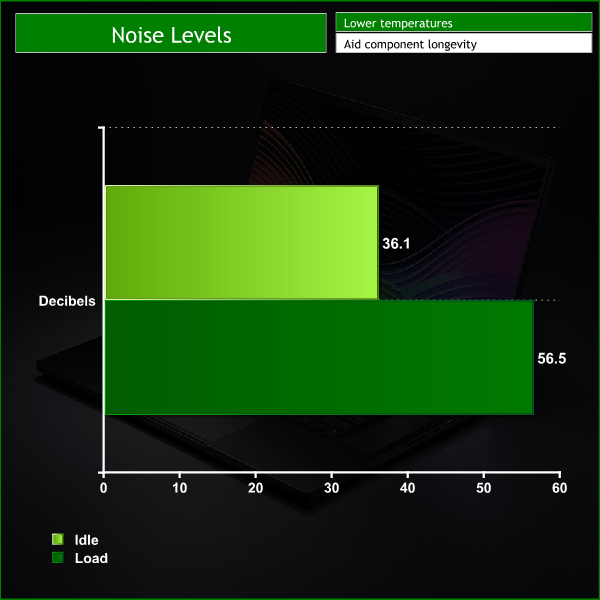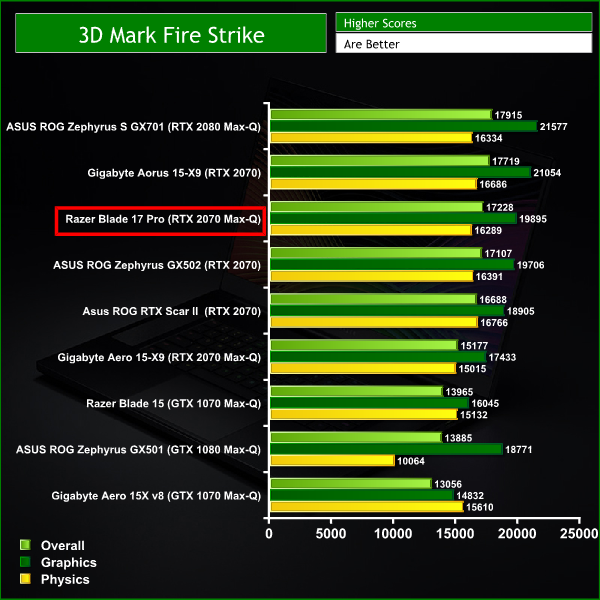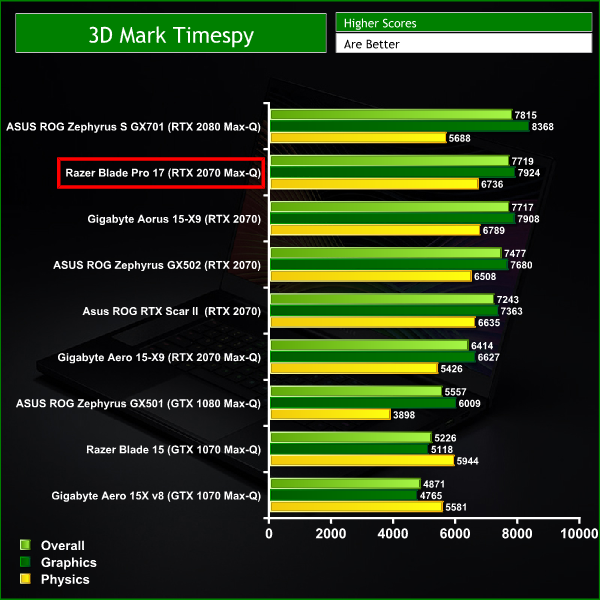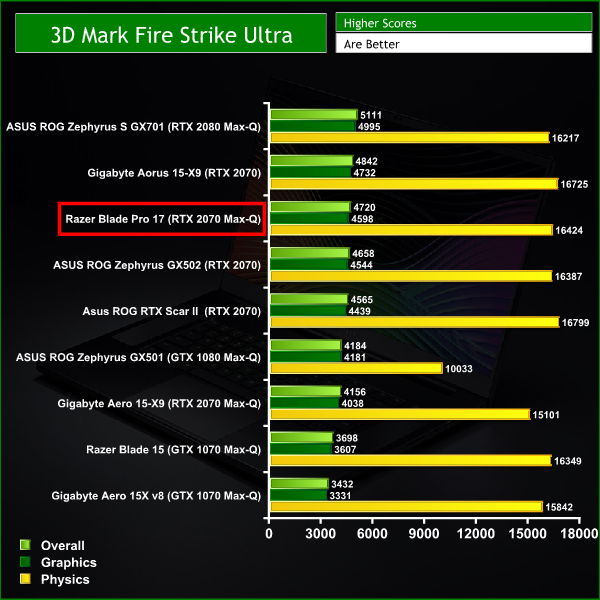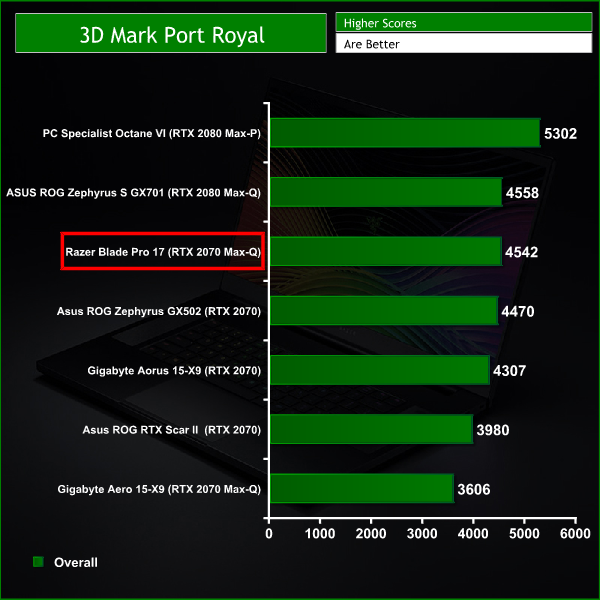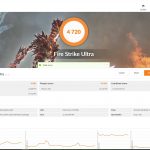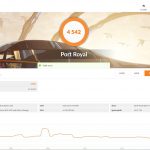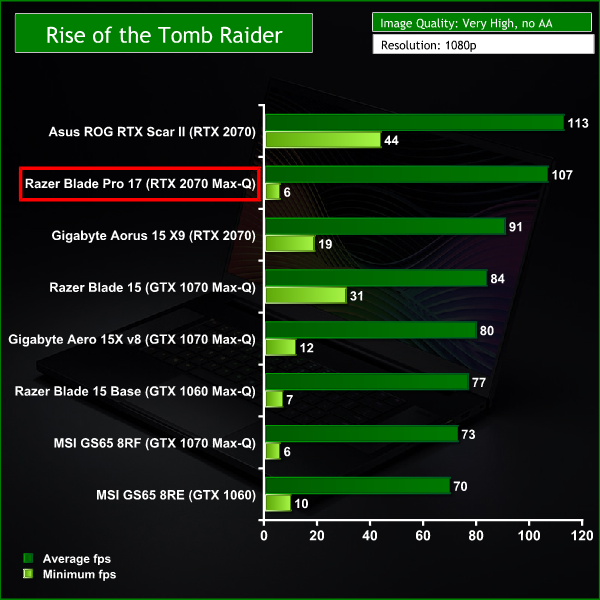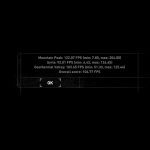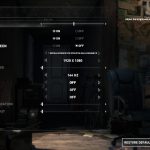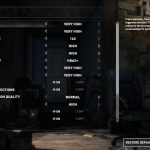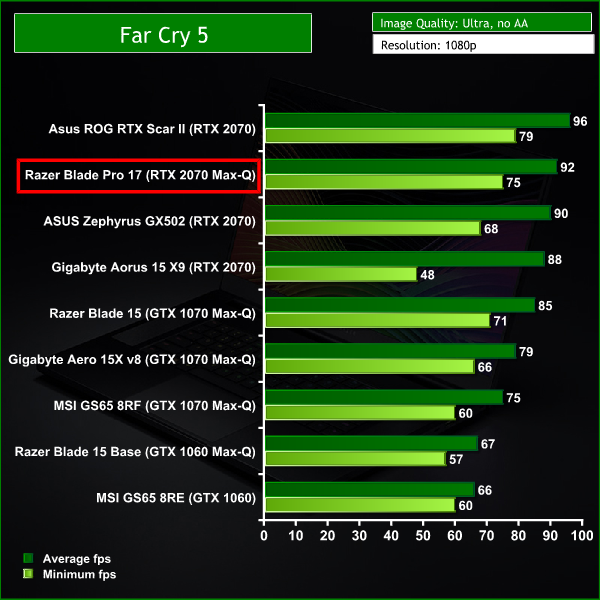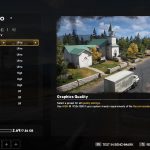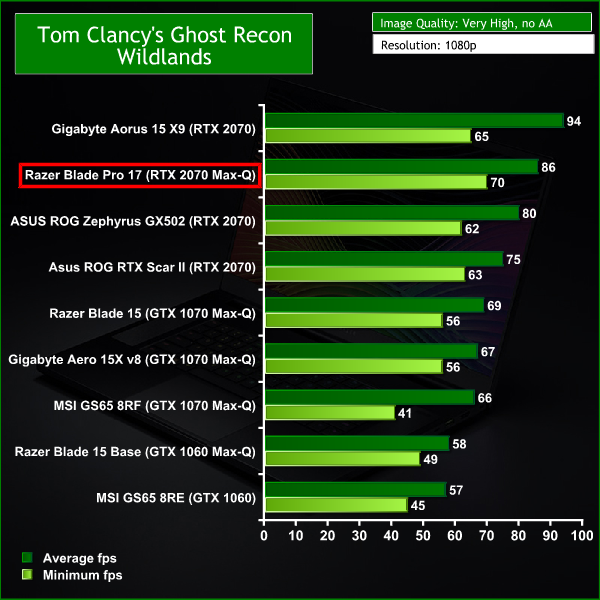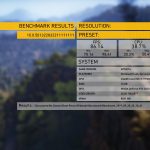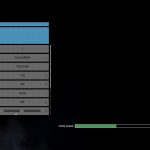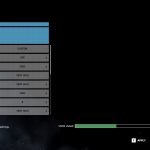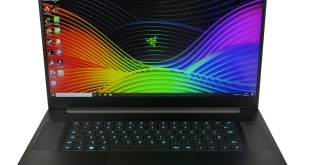
The Razer blade 17 has had another refresh for 2019 with upgrades to improve performance and now features a more refined chassis similar to the Razer blade 15. Our sample features a i7 9750H and RTX 2070 Max Q with a retail price of £2679.99 – is this the ultimate thin gaming laptop for 2019?
Gallery:
Specifications:
- Screen Type: 17.3″ Full HD, 1920 x 1080, IPS, 144Hz, 100% sRGB, 16:9 aspect ratio, matte screen
- Screen Resolution: 1920×1080
- Back light: LED
- Processor: Intel® Core™ i7 9750H (2.6 GHz up to 4.5Ghz base)
- Graphics: NVIDIA® GeForce RTX™ 2070 Max-Q Design (8GB GDDR6 VRAM)
- Storage: 512GB M.2 SSD (NVMe PCIe 3.0 x4)
- Memory: 16GB dual-channel SO-DIMM (DDR4, 2666MHz), Max Supported up to 64GB
- Operating System: Windows 10
- USB Ports: 3x USB 3.2 Gen 2 Type-A Ports, 2x USB 3.2 Gen 2 Type-C Ports (Shared with Thunderbolt 3 Port), 1x Thunderbolt 3 Port
- Network Wireless: Wi-Fi 6 (Intel AX200) (802.11/a/b/g/n/ac/ax)
- Ethernet: 1x RJ45 – 2.5Gb Ethernet
- Bluetooth: Bluetooth 5
- Display Ports 1 x HDMI 2.0b
- Dimensions 395 x 260 x 19.9 mm (WxLxD)
- Weight 2.75 Kgs with battery
- Card Reader: UHS-III SD Card Reader
- Webcam: HD webcam 720p
- Keyboard: Razer Chroma RGB
- Touch pad: Glass Touch pad with Microsoft Precision Touch
- Battery: 70.5WHr lithium polymer battery
This laptop uses the new hexa-core i7-9750H processor and has a base clock of 2.6GHz but is rated to turbo boost up to 4.5GHz under load on a single core. The i7-8750H it replaces was rated at 2.2GHz but with a turbo boost up to 4.1GHz under load. During testing I saw a maximum all core boost clock speed from the i7-9750H in the Razer Blade Pro 17 of around 4.29Ghz.
The 16GB of memory is DDR4 and runs at a speed of 2667MHz. The GPU-Z screenshots show both the Intel integrated graphics and the dedicated Nvidia RTX 2070 Max Q. The RTX 2070 Max-Q features 8GB of GDDR5 memory and has a default clock of 1080MHz and a rated boost clock of 1305MHz. However, during testing I did notice the boost clock peaked at 1890MHz and managed to maintain near to this impressive boost clock most of the time.
All of the testing on the Razer Blade Pro 17 was conducted with the laptop charger plugged in and the best performance battery profile selected. The Razer Blade by default is also set to the balanced profile and I went into the synapse software and adjusted the performance sliders to high on both the CPU & GPU. This allows the laptop to really stretch its legs and get the highest benchmark scores possible.
Crystal Disk Mark:
CrystalDiskMark tests the raw speed of a storage device. It uses a test file to write data to or read data from the drive. We test using the default 1GB file size.
The Samsung PM98 NVMe M.2 drive that can be found in this laptop is a very fast drive that beats out many of the other laptops Kitguru have tested. This is good to see as we have seen other laptop manufactures putting sub par storage even in high end machines. With such fast read and write speeds everything you ask of the Razer blade feels snappy and responsive great for handling large programs and files.
However you also only get the single 512GB drive in the Razer blade though and without the addition of a HDD it is possible you will run out of storage. It's definitely something worth considering if you have a large catalogue of games you want to install.
Cinebench R15:
Cinebench R15 is a cross-platform testing suite that measures CPU performance. I compared the Razer Blade Pro 17 with some other laptops Kitguru have tested that feature the same or similar i7 processors for a quick comparison to demonstrate its relative performance.
With a score of 1252 the Razer Blade 17 sits right near the top when it comes to CPU performance. There isn't much between the I7-8750H & I7-9750H CPUs as cooling and temperature are the restricting factors when it comes to the performance from both these processors. The Razer Blade 17 does however beat out the I7 8750H in the Razer Blade 15 which has a similar design. Because the Razer Blade 17 can cool effectively the processor can boost reasonably high and obtain a good score.
Cinebench R20:
Improvements to Cinebench Release 20 reflect the overall advancements to CPU and rendering technology in recent years, providing a more accurate measurement of Cinema 4D’s ability to take advantage of multiple CPU cores and modern processor features available to the average user.
As Cinebench R20 is a reasonably new release I have less data to compare the Razer Blade 17 to. However there is no doubt that the score of 2751 is very impressive and it beats out all the laptops we have tested to date.
Battery life:
To test battery life I used the ‘Home’ benchmark in PCMark 8. This test isn’t hugely demanding when it comes to computational requirements and, although artificial, it is likely to simulate the sort of stress the laptop would undergo while doing a small amount of video editing, web browsing and word processing. I set the screen brightness to 100%, and the keyboard brightness to 100%.
When the Razer Blade was unplugged it switched to the Balanced profile and cannot be used in high performance mode. This means that the components can't reach their full potential but makes a lot of sense when it comes to preserving battery life. Gaming laptops are never really suitable for playing without access to a power outlet anyway.
The Razer Blade Pro has an average sized battery for a gaming laptop at 70.5Whrs but the results from the PC Mark 8 test are very impressive. With a score of 2.5Hrs it sits right at the top of the chart which should translate to around 5 hours of use in the real world. From testing the Blade out I found this score to be pretty accurate.
I could use it for a surprising amount of time without reaching for the charger. Razer seemed to have nailed the balanced profile and found a good mix between performance and longevity that makes this laptop a real winner when it comes to multitasking. It can be plugged in for full beast mode when it comes to gaming but the good battery life means it can also be a great portable companion for basic tasks on the go.
Temperature testing:
I tested the temperatures with the laptop charger plugged in. I ran AIDA 64 for 10 minutes to stress the CPU & GPU simultaneously. AIDA64 is an artificial benchmark and tests the laptops cooling to the max.
While idle the temperatures recorded for both the CPU and GPU are a little warmer than some laptops Kitguru have tested but the Razer Blade also seems to run quiet when it comes to idle fan noise.
Under load the temperatures are hot but not bad and the Razer Blade Pro 17 seems to cope reasonably well. The CPU did peak at 91C at the start of the test but this was brief and the boost clock speed was taken down a peg or two which allowed the temperature to even out at about 88C for the remainder of the test. With a boost clock speed of 3.09GHz we have seen faster speeds but the CPU was far from dropping below the 2.6GHz throttle point.
The RTX 2070 Max-Q faired very well and hit a very safe maximum of 74C. It also maintained a high boost clock speed of 1800Mhz which is impressive for a Max-Q version of this graphics chip.
Aida 64 is a worst case scenario for a laptop and isn't likely to represent the day to day tasks an average user would undertake. Therefore I also checked the temperatures and boost clock speed of the components while gaming. The maximum temperatures are pretty similar to the Aida64 results at 88C for the CPU and 73C for the GPU however the boost clock speeds are higher which is good when it comes to gaming performance. With the CPU boosting to 3.98 Ghz and the GPU reaching 1890Mhz gaming performance won't suffer at all when things begin to heat up as the Razer Blade Pro 17 seems to be able to handle it.
Overall for a thin gaming laptop the cooling performance is really quite impressive. Despite the all metal construction the chassis got warm in the expected areas around the vents, but I didn't notice any strange or unwanted hot spots. I also found the fan profile to be well balanced between noise and performance and the fan speed and temperature both drop down fast as soon as any intensive workload is finished.
Noise levels:
I measured noise levels using a sound meter while the laptop was idle with no programs open, and then during stress testing to get a reading with the system under 100% load.
I found the noise levels on the Razer blade to be very impressive. Gaming laptops can be loud, hot and bulky but Razer seem to have perfected the cooling in a very thin chassis. An idle decibel level of 36.1 is whisper quiet and to me the fans were barely audible while idle. Under load the fan noise noticeably increases but it is far from the loudest laptop I've heard and to me it's acceptable. The speakers are loud enough to drown it out and I could not hear it when gaming with a headset.
I took these readings while the laptop was in the high performance mode and it manages to be even quieter in the balanced profile. You also have the option of setting the fan speed manually if you're to not worried about performance and want to ensure it stays quiet.
3DMark results:
For this test, I ran the Razer Blade pro 17 through Fire Strike, Fire Strike Ultra, Time Spy and Port Royal which is the new benchmark specifically for ray tracing. In the graphs below you can see it compared against similar laptops. Even though some have similar specifications, slight variations in boost clock speeds caused by fluctuations in temperature have an impact on performance.
The Razer Blade Pro 17 might only have a Max-Q version of the RTX 2070 but that certainly doesn't seem to hold it back. It achieved consistently good scores across all GPU, CPU and physics tests. The Benchmark scores are very high and it happily sits near the top of the charts in all the 3DMark benchmarks battling with the Gigabyte 15-X9.
In the Port Royal benchmark which tests raytracing performance it got within touching distance of the RTX 2080 Max-Q equipped Zephyrus which is very impressive.
Gaming performance:
I used the Razer Blade Pro 17 to play 3 different popular and graphically demanding games. I tested the games at their highest graphical settings with DX12 turned on where possible and AA disabled. I then compared the results to other laptops Kitguru have tested.
Rise of the Tomb Raider is an action adventure game with many different environments and immersive landscapes making it a useful way to test this laptop’s gaming performance. It was tested on Very high settings with AA disabled.
Far Cry 5 was released on March 27, 2018. The gigantic open world of Hope County has plenty of beautiful scenery to test how well this laptop performs with a newer game. I tested on the Ultra preset with AA and motion blur disabled.
Tom Clancy’s Ghost Recon Wildlands is a game with a superb open world environment. The beautiful scenery of mountains, forests and deserts requires a lot of GPU power to render, particularly on high settings. This demanding game is perfect for testing this laptops gaming performance. I tested on very high settings with AA disabled.
Gaming benchmarks are the most interesting and also probably the most important when it comes to testing a gaming laptop. The great GPU and CPU performance in the Razer Blade 17 Pro come together to produce some excellent results. It consistently sits in second place when compared to other similar laptops with a high average fps in all of the games.
All of the tester games are rather demanding but the 144hz display certainly doesn't go to waste, this laptop could almost use a 240Hz display if you are playing older or less demanding games. I have seen 240hz panels in some other high end gaming laptops recently such as the Zephyrus GX502.
The Razer Blade 17 Pro is a very expensive laptop and there's no denying that. The £2680 price tag will alienate a lot of people but if you have this kind of money to spend on a laptop and you want the best then I think the Razer blade Pro 17 is a good option.
The build quality is excellent and it looks and feels like a premium laptop. The chassis is constructed from metal and it feels solid and well constructed with very little flex despite the fact it is so thin. This does make it slightly more heavy but it is surprisingly portable for a 17″ laptop. It's also very good to look at with a subtle black finish, green Razer Logo and RGB keyboard.
This laptop has very few negatives we could mention but the main area for improvement would be the panel. With the thin bezels, IPS technology and 144hz refresh rate it ticks plenty of boxes but I can't help feeling that at this price point they could have opted for a panel with a 240Hz refresh rate, or even one with Nvidia G sync technology.
Using the laptop is a pleasant experience and I like the feel of the keyboard, trackpad. The speakers also sound good and are able to produce a lot of volume. It also has a basic but usable webcam. My only two niggles are that the keyboard is missing a numpad which is something I'd expect to see on a 17″ laptop and also the trackpad is so large that it's easy to accidentally touch. It caused me some issues during testing.
Battery life of the Razer Blade 17 is very impressive and if you are after a good multitasking laptop that can deliver high frame rates while gaming but also survive a trip on the train or a long meeting at work then you won't be disappointed.
The main area this laptop excels in though has to be performance. The Razer Blade 17 scored very well in all of the tests and this makes it great for gaming. The components aren't handicapped thanks to the well designed vapor chamber cooling system Razer have designed.
Pros:
- RGB Chroma lighting.
- Excellent build quality.
- Speakers sound decent.
- Thin portable Chassis.
- Good cooling.
- Great performance.
- Reasonably Quiet fans.
- Very fast storage.
- Easy to open and upgrade.
Cons:
- Lacking a Numpad.
- 240hz/G-Sync panel would have been welcomed at this price point.
- Webcam could be better.
- Matt surface attracts fingerprints (looks great though!).
The Razer Blade Pro 17 that we reviewed can be found at Overclockers UK HERE for £2,679.95
Kitguru says: The Razer Blade Pro 17 is a fantastic laptop. The cooling system ensures that the hardware inside is able to perform at the highest levels. It doesn't generate a lot of noise under load and it looks fantastic. It is an expensive laptop, but you really do get what you pay for.
 KitGuru KitGuru.net – Tech News | Hardware News | Hardware Reviews | IOS | Mobile | Gaming | Graphics Cards
KitGuru KitGuru.net – Tech News | Hardware News | Hardware Reviews | IOS | Mobile | Gaming | Graphics Cards


